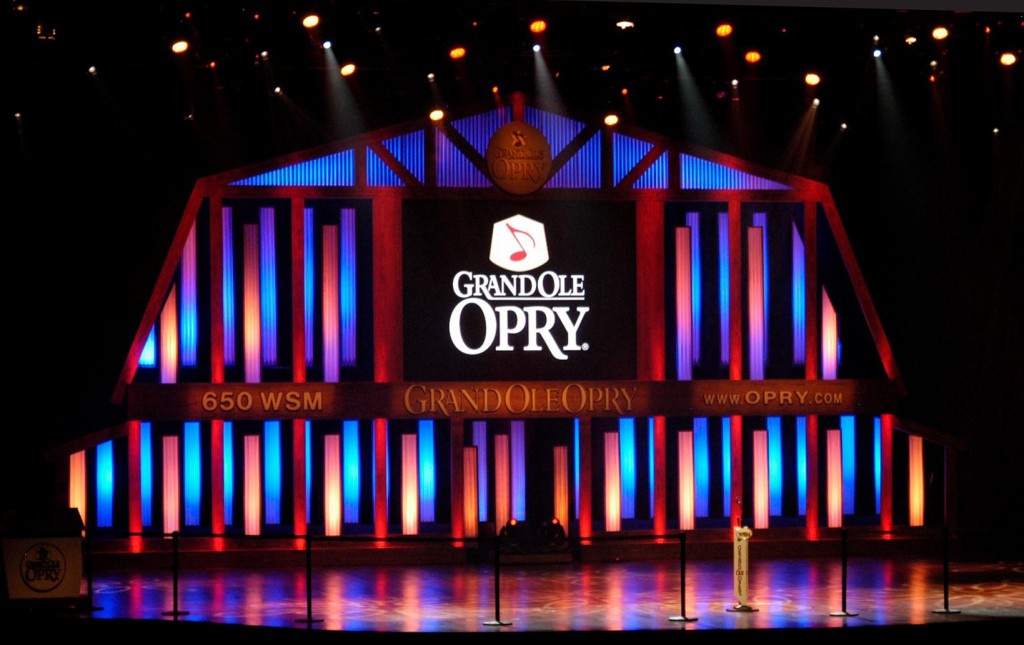


On November 28, 1925 the Grand Ole Opry started as the WSM Barn Dance in the new fifth-floor radio studio of the National Life & Accident Insurance Company in downtown Nashville. On November 2, WSM hired long-time announcer and program director George D. "Judge" Hay, an enterprising pioneer from the National Barn Dance program at WLS in Chicago, who was also named the most popular radio announcer in America as a result of his radio work with both WLS and WMC in Memphis, Tennessee. Hay launched the WSM Barn Dance with 77-year-old fiddler Uncle Jimmy Thompson on November 28, 1925, and that date is celebrated as the birth date of the Grand Ole Opry.

In its early days, the Grand Ole Opry presented a broad range of what would become known as country music. Born as a barn dance program in a downtown office building, the show emphasized old-time fiddlers and harmonica players, as well as what Hay called “hoedown bands” like the Possum Hunters and the Gully Jumpers that gave the show a rural feel.
The Opry’s popularity grew rapidly in its second decade, forcing the show to move four times and, eventually, to start charging admission. But nothing seemed to dampen the public’s enthusiasm for stars like the Delmore Brothers, the husband-and-wife duo Curly Fox & Texas Ruby, and long-bow fiddler Arthur Smith and his band with Sam and Kirk McGee, the Dixieliners. Comedy acts took their place on the Opry as Sarie and Sallie and Jamup and Honey joined the cast. Stylistically, the show’s emphasis moved from old-time instrumentals to modern country singers, and two of the Opry’s most enduring figures, Roy Acuff and Bill Monroe, joined the cast during this time.

As audiences for the live show increased, National Life & Accident Insurance's radio venue became too small to accommodate the hordes of fans. They built a larger studio, but it was still not large enough. After several months with no audiences, National Life decided to allow the show to move outside its home offices. In October 1934, the Opry moved into then-suburban Hillsboro Theatre (now the Belcourt) before moving to the Dixie Tabernacle in East Nashville on June 13, 1936. The Opry then moved to the War Memorial Auditorium, a downtown venue adjacent to the State Capitol, and a 25-cent admission fee was charged to try to curb the large crowds, but to no avail. During the '40s, the Opry moved to its most famous home, the red-brick Ryman Auditorium. The half-hour Prince Albert Show segment, which had been carried regionally on the NBC radio network, went national, carried by more than 140 stations. Opry stars like Red Foley, Eddy Arnold, and Minnie Pearl became ambassadors for country music, traveling throughout the nation during the week and returning home to the Opry stage on weekends. During this decade, Ernest Tubb took an Opry troupe to New York’s Carnegie Hall, and the show made its first European tour.

During the ‘50s, the show not only brought in established acts like Flatt & Scruggs and Mother Maybelle Carter, it could also turn an unknown like Stonewall Jackson into a star. And as the recording industry in Nashville took hold, Opry membership and hit records often went hand in hand.
The Opry began the '60s by inducting a bevy of young talent. Patsy Cline, Hank Locklin, George Hamilton IV, and Billy Walker all joined in the first year alone. And no fewer than nine future members of the Country Music Hall of Fame would enter the Opry fold. The era also had its share of tragedy, including the untimely deaths of Cline, Cowboy Copas, Hawkshaw Hawkins, Johnny & Jack's Jack Anglin, Jim Reeves, Texas Ruby, and Ira Louvin.
The Opry found a new home during the ‘70 leaving the urban surroundings of the Ryman for the suburban splendor of the new Grand Ole Opry House and an adjoining theme park. The cast continued to expand, too.